Chart 1: Headline and Core CPI (YoY, last datapoint: June 2024)
Key takeaways:
The overall Consumer Price Index (CPI) increased by 3% year-over-year (y/y) in June, slightly below the consensus expectation of 3.1% and below May's 3.3% y/y increase.
Core CPI in June was 3.3% y/y (S.A.), also slightly below consensus, at 3.4% y/y, and the 3.4% y/y rate seen in May.
Inflationary pressures are primarily concentrated in the core service sector, with an increase of 5% year-over-year, whereas the goods sector is experiencing deflation, with a decrease of -1.7% year-over-year.
The primary factor behind recent inflationary pressures is still the shelter component of the Consumer Price Index (CPI). Month-on-month its reading moderated to 0.2% the slowest increase of the year on a monthly basis.
Given the recent disinflationary trend, particularly in month-on-month readings, the likelihood that the Federal Reserve will cut the federal funds rate twice by the end of 2024 is increasing.
Review of the Inflation Release
The Consumer Price Index (CPI) rose by 3% year-over-year in June (Chart 1), below the market consensus of 3.1% y/y and slightly below May's figure of 3.3% y/y. On a month-on-month basis, there was a small decrease of -0.1%, below the market consensus of an increase of 0.1%, and the no change recorded in May.
Core CPI (excluding food and energy) increased by 3.3% year-over-year (Chart 1), below the market consensus and the May 2024 figure of 3.4% y/y. On a month-on-month basis, core CPI rose by 0.1 % below the 0.2% recorded in May and the consensus forecast of 0.2% m/m.
Core services (services excluding energy) remain the primary driver of inflationary pressures. In June, core services increased by 5% year-over-year (compared to 5.2% y/y in May), while core goods (goods excluding energy) experienced another decline, by -1.7% (the same as in May). The current release confirms the ongoing adjustment of core CPI, albeit at a relatively slow pace yearly.
The following chart (Chart 2) illustrates this dichotomy between core goods and core services:
Chart 2: Core Services and Core Goods (YoY, last datapoint: June 2024)
As anticipated, the CPI in June was primarily driven by the housing component (Tables 1 and 2). The overall shelter component rose by 5.2% year-over-year in June, below the 5.4% figure recorded in May.
Supercore services (core services excluding shelter – Chart 3) increased by 4.8% year-over-year, moderating relative to the 5% increase in May 2024.
Core services (excluding energy) prices increased by 5% year-over-year in June, slightly below the 5.2% year-over-year rise in May. On a month-on-month basis, core services increased by 0.1%, below the 0.2% rise in May, and lower than the 0.4% increase in April.
Core goods (excluding food and energy) prices continued their deflationary trend, declining by -1.7% year-over-year in June, the same as the -1.7% year-over-year in May. Most subcategories within core goods registered declining prices on a year-over-year basis. A similar pattern is observed in the month-on-month variation, with core goods decreasing at -0.1% month-on-month in June, compared to no change in May and -0.1% in April.
Chart 3: Supercore Service and Rent of Shelter (YoY, last datapoint: June 24)
Chart 4: Shelter component of CPI (YoY, last datapoint: June-24)
The Bureau also published the Harmonized Index of Consumer Prices (HICP), following the ECB’s methodology. According to the BLS: “The HICP differs from the U.S. Consumer Price Index (CPI) in two major respects. First, the HICP includes the rural population in its scope. Second, and probably more importantly, the HICP excludes owner-occupied housing”.
Chart 5 now includes updated data through June 2024. It reveals that by excluding the owner-occupier rent component from the CPI, the inflation rate is significantly lower, at 1.8% compared to 2% year-over-year in May 2024.
Chart 5: Harmonized Index of Consumer Prices for the U.S. (YoY, last datapoint: June 24)
Summary
The persistence of above-target inflation has postponed the Fed's beginning of the easing cycle. However, recent improvements in month-on-month core and core services readings should boost the Fed's confidence to begin easing in September 2024. Additionally, further moderation in the shelter component in the latter half of 2024 is expected to alleviate inflationary pressures even more.
Table 1: CPI by components (% YoY)
Table 2: CPI by components (% MoM)




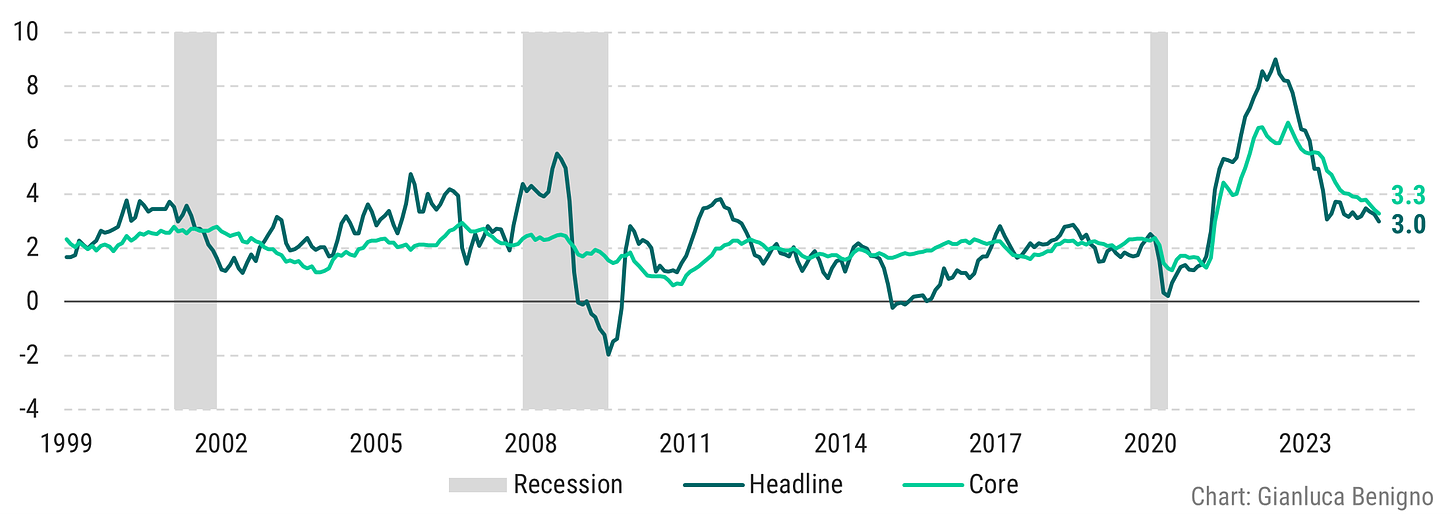
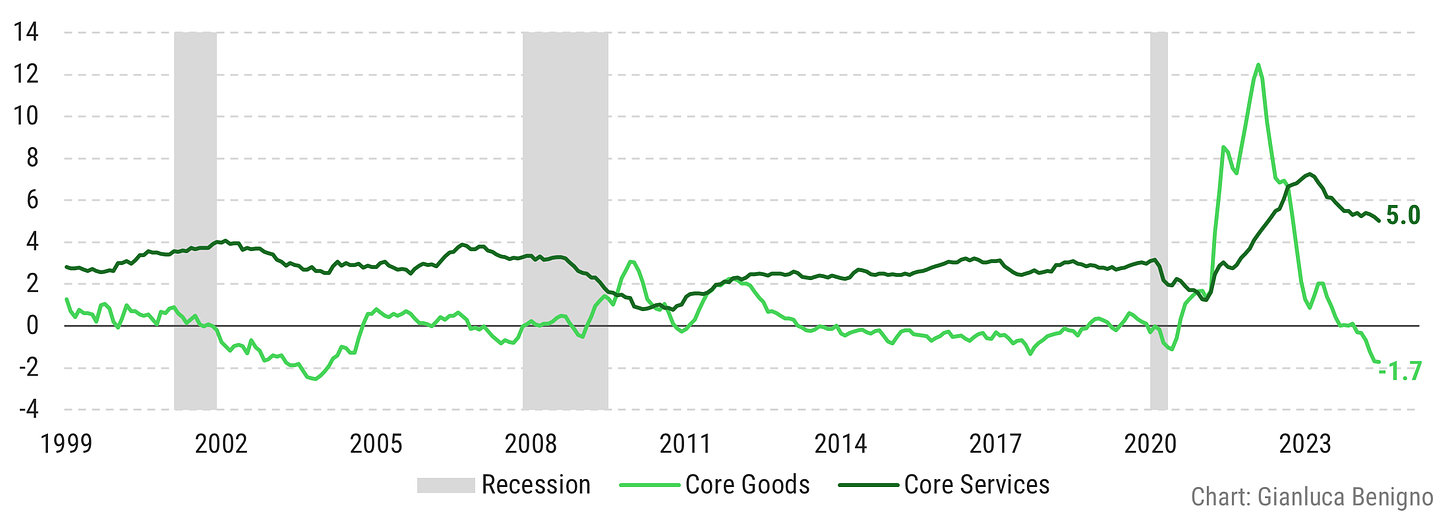
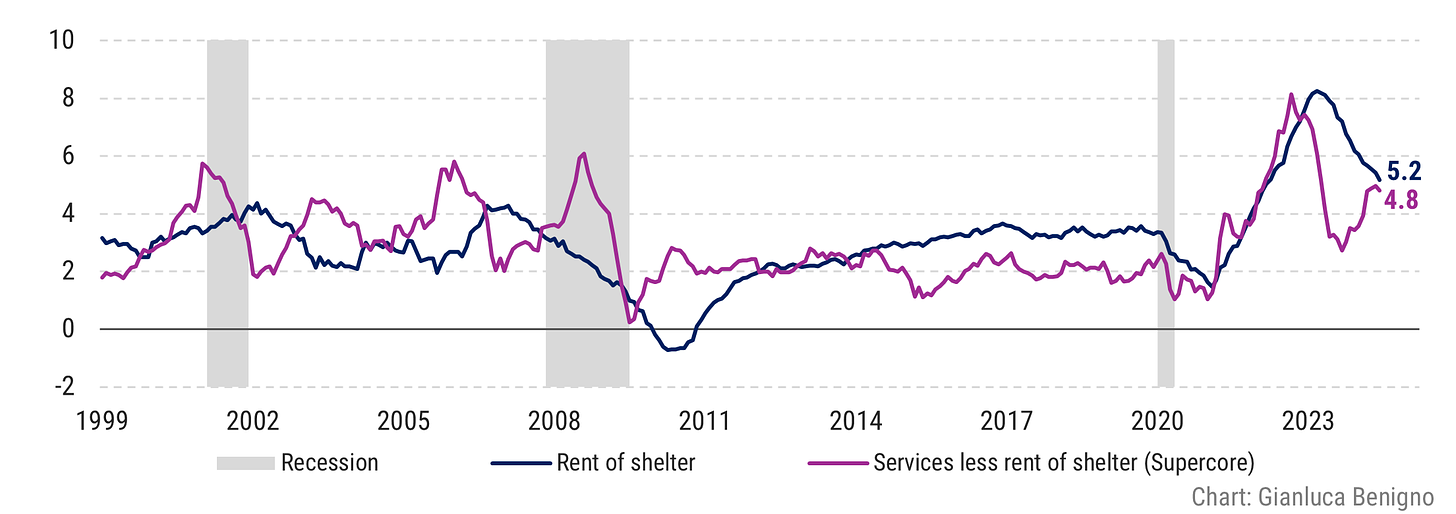
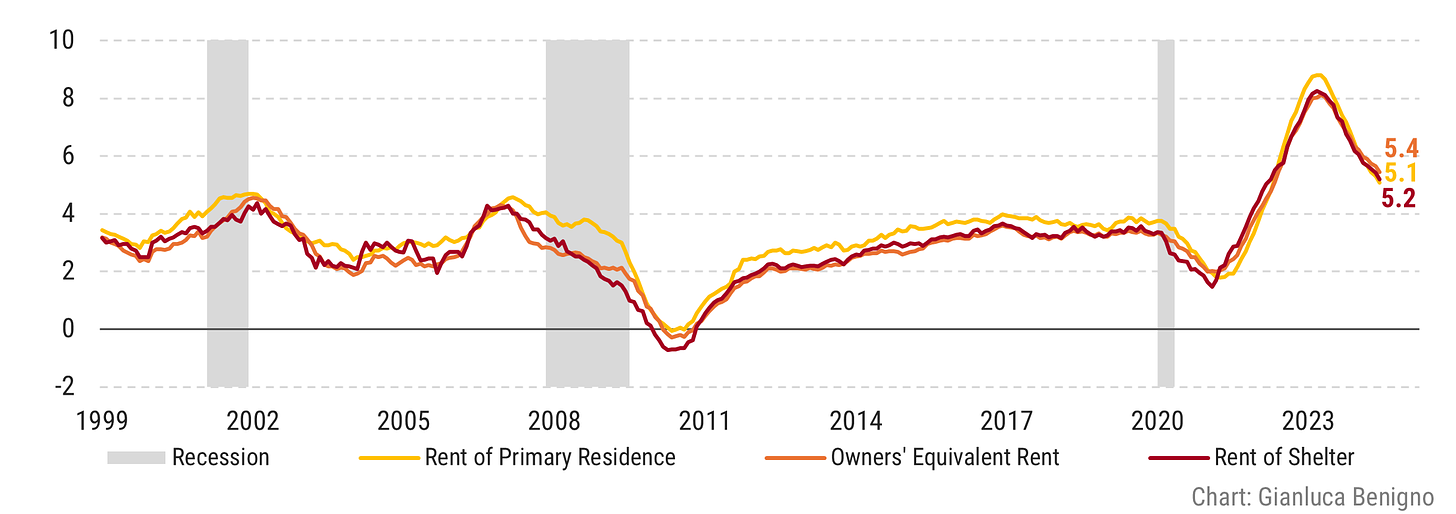
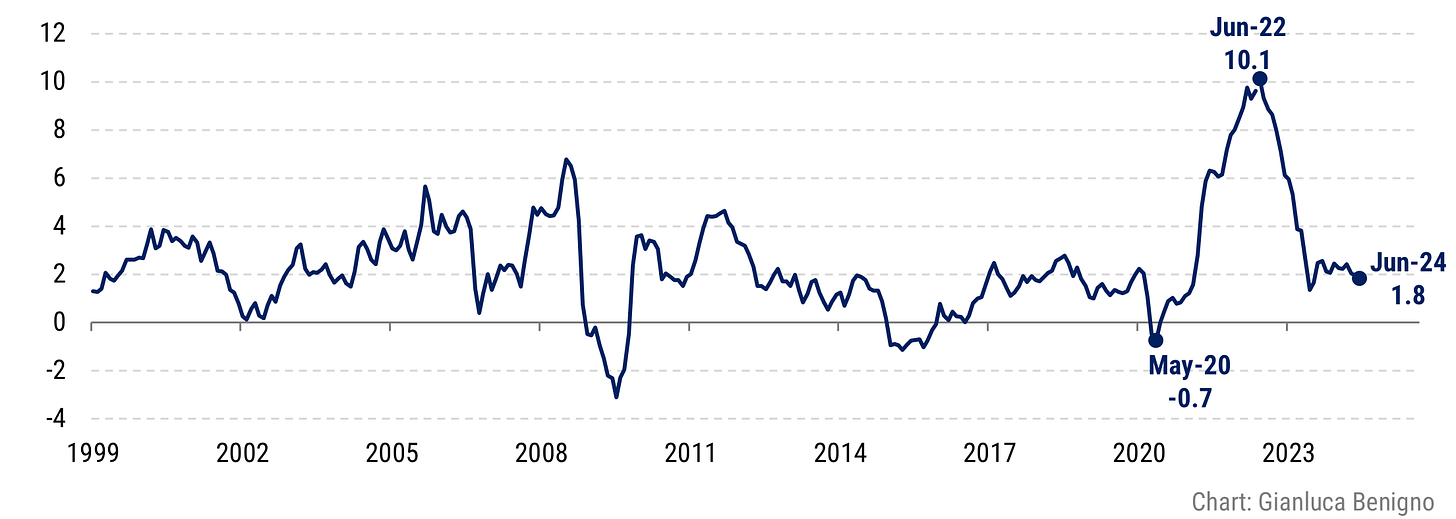
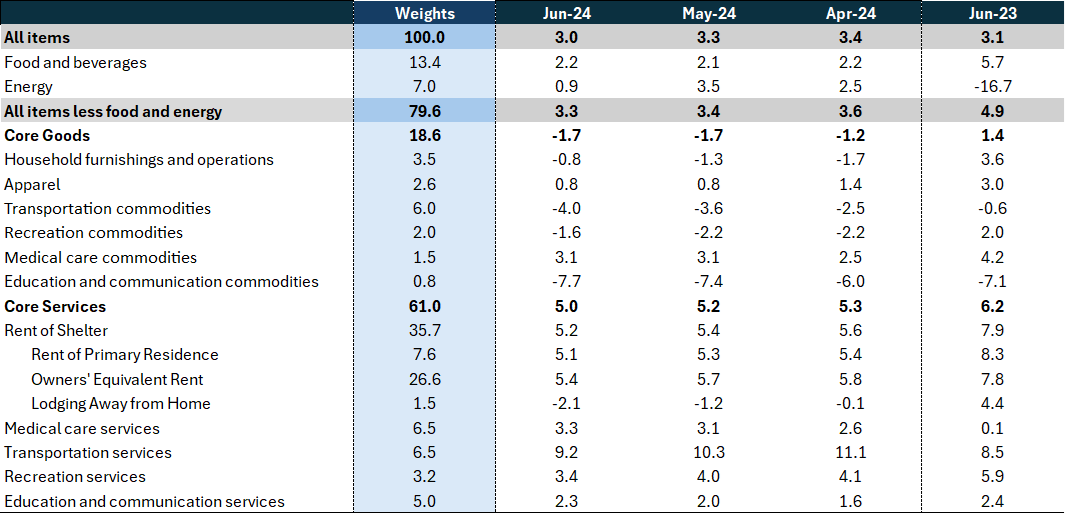
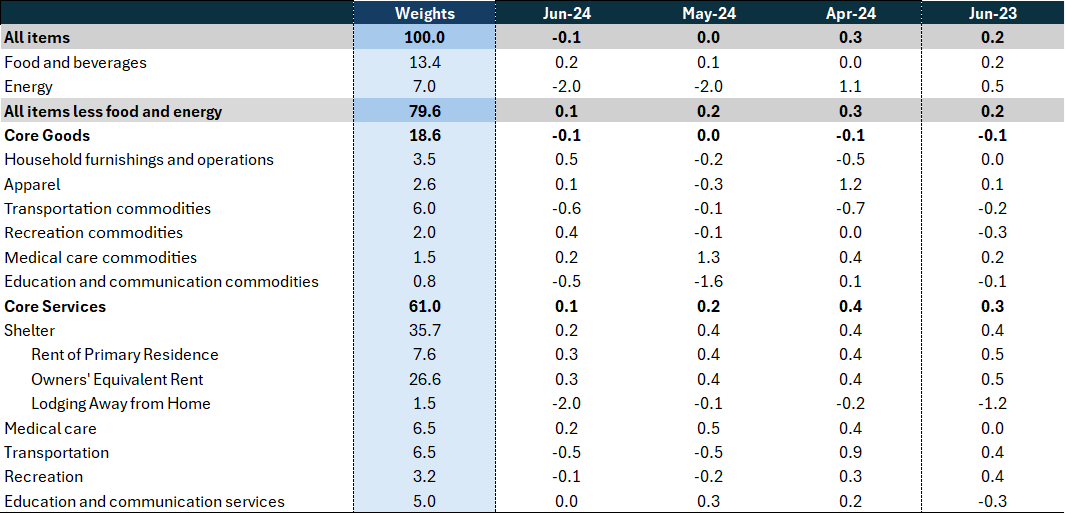
Excellent summary - The housing component is flattening out, but as in prior cycles it may not fully recede. If so, then we can expect much of the already present increase to remain in place. If I'm right, that will have long term implications for the supply and demand equilibrium in housing.